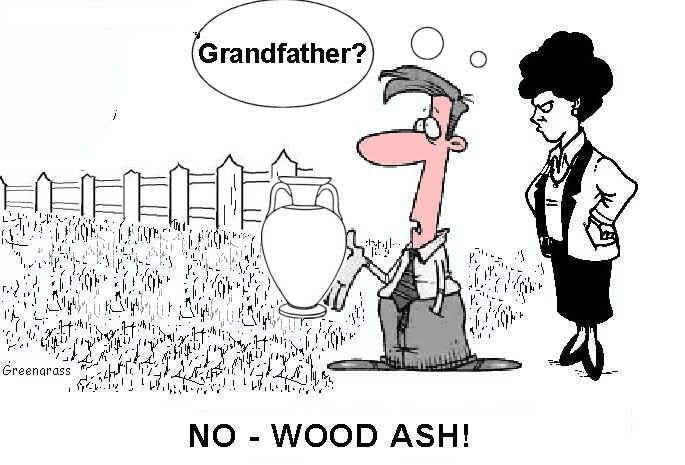Wood Ash
Many people in Spain use a wood burning stove in the winter time to supplement their house heating. Many gardening books advise throwing these ashes in the
garden, however they may be useful under pine trees |

|
Wood ash does have fertilizer value, the amount varying with the species of wood being used. Generally, wood ash contains less than 10 percent potash, 1 percent phosphate and trace amounts of micro-nutrients
like iron, manganese, boron, copper and zinc. Trace amounts of heavy metals
like lead, cadmium, nickel and chromium also may be present. Wood ash does not contain nitrogen.
The largest component of wood ash (about 25 percent) is calcium carbonate, a common liming material that increases soil alkalinity. Wood ash has a very fine particle size, so it reacts rapidly and completely in the soil. Although small amounts of nutrients are applied with wood ash, the main effect is that of a liming agent.
Increasing the alkalinity of the soil does affect plant nutrition. Nutrients are most readily available to plants when the soil is slightly acidic. As soil alkalinity increases and the pH rises above 7.0, nutrients such as phosphorus, iron, boron, manganese, copper, zinc and potassium become chemically tied to the soil and less available for plant use.
Applying small amounts of wood ash to most soils will not adversely affect your garden crops, and the ash does help replenish some nutrients.
However, because wood ash increases soil
pH ...![]()
Specific recommendations for the use of wood ash in the garden are difficult to make because soil composition and reaction varies from garden to garden. Acidic soils (pH less than 5.5) will likely be improved by wood ash addition. Soils that are slightly acidic (pH 6.0 to 6.5) should not be harmed by the application of 20 pounds per 100 square feet annually, if the ash is worked into the soil about 6 inches or so. However, if your soil is neutral or alkaline (pH 7.0 or greater), find another way to dispose of wood ash. If you don't know your soil's acidity or alkalinity level, have it tested for pH.
Hide this content.


